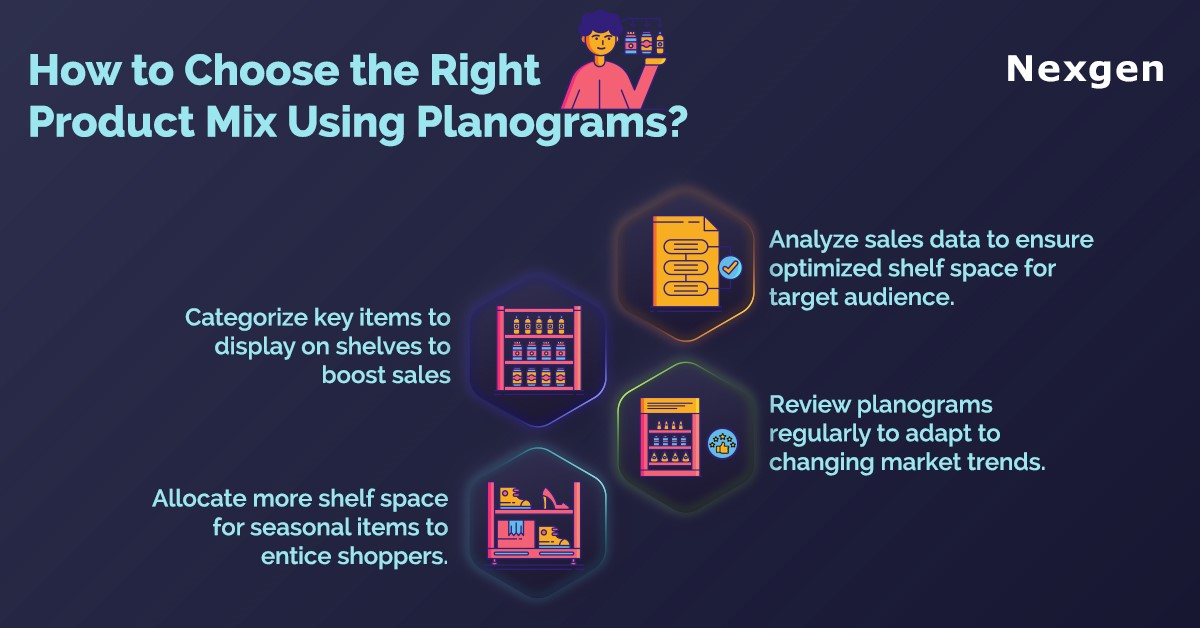Creating the ideal product mix is like crafting a beautiful bouquet of flowers; each bloom contributes to the overall beauty and fragrance. However, achieving this floral harmony can be quite challenging. How do you curate a product assortment that appeals to a wide range of customer preferences but also remains updated with market trends, enhancing your reputation? Product selection lies at the heart of successful retailing, and it is through data-driven assortment planning strategies that you can elevate your store's performance.
So, how do you achieve this? It is through market analysis, data-driven assortment planning, and timely shelf planning and promotion. Planograms play a pivotal role in ensuring that your store's shelf layout is optimized for sales and customer satisfaction. By understanding your audience, analyzing sales data, categorizing products, and staying adaptable, you can create effective planograms that drive success. Remember that the key to success lies in continuous improvement, so stay vigilant and ready to adjust as needed. In this blog, we will explore how to choose the right product mix using shelf planning software such as planograms to maximize sales:

- Understand your target audience: Before you start creating a planogram, it is crucial to have a deep understanding of your target audience. Analyze their demographics, preferences, and shopping behaviors. This data will serve as the foundation for your product mix decisions. For example, if you run a children's toy store, your target audience would be parents and caregivers looking for age-appropriate toys.
- Analyze sales data: Reviewing past sales data with a planogram helps you get information when it comes to optimizing your product mix. Identify your best-selling items, seasonal trends, and products with high profit margins. This information will help you prioritize the products that should occupy prime shelf space in your store.
- Categorize your products: Organize your products into categories and subcategories. Group similar items together to create a logical flow in your store. For instance, in a grocery store, you might have categories like dairy-produce, and canned goods. This categorization simplifies the planogram creation process.
- Prioritize key products: Once you have categorized your products, it is time to prioritize. Highlight your best-selling products—those that are essential to your brand or generate the most revenue. Ensure that these products are prominently displayed within their respective categories.
- Consider seasonality: Seasonal products should be given special attention in your planograms. Plan for rotations and adjustments to accommodate seasonal shifts in demand. For instance, during the holiday season, you might allocate more space to gift items and decorations.
- Optimize space: Planograms are all about maximizing space efficiency. Consider the layout of your store and allocate shelf space accordingly. Utilize vertical space with shelves and hooks, and use floor space for larger or promotional items.
- Regularly review and update: The retail landscape is ever-changing. What works today may not work tomorrow. Regularly review your planograms and sales data to identify areas for improvement. Stay flexible and be ready to adapt to changing market trends and customer preferences.
Overview of Nexgen POG
Nexgen POG is a robust and user-friendly cloud-based visual merchandising tool. It is designed for quick and efficient planogramming with minimal effort. Planogram in retail can be designed by easily dragging and dropping the products. The multi-device compatibility feature of POG allows you to obtain, share and edit planogram on any device, including your phone. It helps in designing store-specific planograms for increased product visibility and sales.
Get Your Free Trial Now!